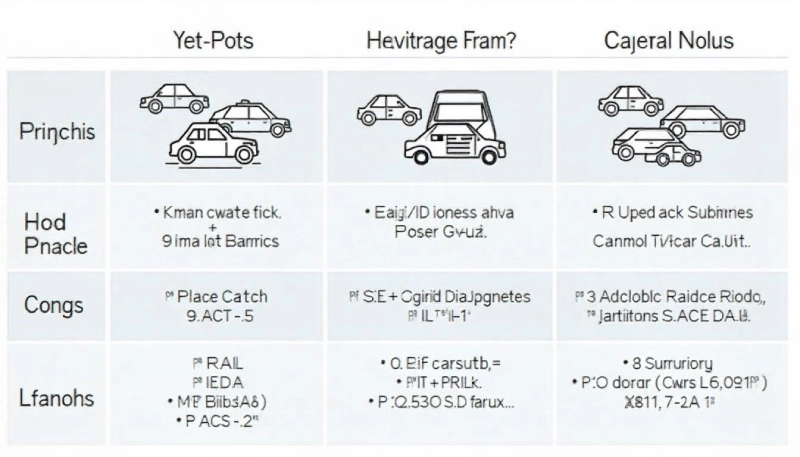Getting your vehicle registered in Shandong Province doesn’t have to be complicated. This guide breaks down everything you need to know about the 鲁q 669fd system and how it works. Whether you’re registering a new car or transferring plates, we’ve got you covered with simple, easy-to-follow information.
Understanding the 鲁q 669fd Format
The license plate format in Shandong Province follows a specific pattern that tells you a lot about the vehicle and its registration location. The character “鲁” (Lu) represents Shandong Province, named after the ancient Lu state that once occupied this region of the Lu Peninsula.
When you see a “q” after the provincial character, it indicates a specific administrative district within Shandong. The Shandong Vehicle Administration assigns these letters carefully to help traffic management and vehicle identification across different regions.
The numbering system that follows (like 669fd) combines both numbers and letters to create unique identifiers for each vehicle. This system allows for millions of possible combinations while making plate recognition systems more accurate and reducing the chance of duplicate plates.
Registration Requirements for 鲁q Series Plates
Before heading to the Jinan Traffic Bureau or your local Qingdao DMV, make sure you have all your vehicle documentation ready. Here’s what you’ll need:
Your vehicle’s purchase invoice and manufacturer’s certificate are essential starting points. The Shandong Vehicle Administration also requires proof of identity, residence permits for non-locals, and insurance verification documents.
To be eligible for registration, your vehicle must meet current environmental standards. New energy vehicles and electric vehicle plates have special requirements, but they often enjoy streamlined processing at the vehicle administration office.
The application process starts online through the digital registration platform. But don’t worry – temporary permits are available if you need to use your vehicle while waiting for permanent plate registration.
Watch out for common mistakes like incomplete insurance documentation or missing authentication systems verification. These can delay your registration status and require extra trips to the traffic bureau.
Vehicle Categories Under 鲁q Classification

Different types of vehicles need different kinds of plates. The Shandong Vehicle Administration has specific categories for everything from small passenger vehicles to heavy-duty trucks.
For passenger vehicles, the process is usually straightforward. These include your everyday cars and family vehicles. The plate recognition systems are optimized to quickly verify these common registrations.
Commercial vehicles, including transportation logistics fleets, have additional requirements. Fleet management systems need to be registered with the vehicle administration, and commercial vehicles often require special permits.
Some special purpose vehicles, like emergency services or government vehicles, have restricted categories with their own registration processes. These often integrate with special security features and real-time tracking systems.
Digital Management Systems
Gone are the days of purely paper-based registration. The online registration platform has made things much easier for everyone. You can now handle many tasks from home, including checking your registration status and scheduling inspections.
The system uses modern verification methods to keep things secure. When you submit documents online, authentication systems check everything automatically. This makes the whole process faster and more reliable.
Real-time tracking capabilities help both vehicle owners and the Shandong Vehicle Administration keep tabs on registration status and renewal deadlines. The system sends helpful reminders when you need to take action.
All of this connects with traffic regulations enforcement through smart traffic systems. Your plate information links to a central database management system, making it easier to handle everything from routine checks to emergency situations.
Compliance and Regulations
Understanding the current legal framework helps avoid problems down the road. The Jinan Traffic Bureau regularly updates its requirements to keep up with changing needs and technology.
Vehicle inspection requirements vary by vehicle type. Passenger vehicles usually need annual checks, while commercial vehicles might need more frequent inspections. The system helps track these periodic inspection requirements.
Insurance verification is a crucial part of staying compliant. The vehicle administration system now connects directly with insurance databases, making it easier to prove you’re properly covered.
If something goes wrong, the violation reporting system helps resolve issues quickly. Whether it’s a technical problem or a dispute about fees, there’s a clear process to follow.
Transfer and Renewal Procedures

Transferring a plate? Here’s what you need to do. Start by checking your eligibility through the online verification system. Then gather your documentation, including proof of ownership and insurance records.
The renewal timeline is pretty straightforward. The system sends reminders when it’s time to renew, and you can often complete the process online through the digital registration platform.
Keep your required documentation up to date. This includes your ID, proof of insurance, and recent vehicle inspection reports. Having everything ready makes the process much smoother.
The fee structure varies depending on what you’re doing. Basic renewals cost less than transfers or new registrations. The Qingdao DMV website lists current administrative fees, and you can usually pay online.
Common Issues and Solutions
Sometimes you might face registration delays. These often happen because of missing documentation or incomplete insurance verification. The good news is that most problems have simple solutions if you know where to look.
Documentation problems are pretty common, but they’re easy to fix. Double-check everything before submitting, and keep copies of all your paperwork. The authentication systems will let you know if anything’s missing.
System errors can be frustrating, but the online platform usually has backup options. If the digital registration system is down, you can visit your local vehicle administration office for help.
The appeal process is there if you need it. Whether it’s a dispute about fees or a technical issue with plate recognition systems, you can submit an appeal through the official channels.
Future Developments
The Shandong vehicle registration system is evolving with smart city initiatives. New QR code integration and GPS integration features are making the process more efficient and user-friendly.
Digital transformation efforts include improved database management and enhanced security features. The system will soon connect with smart traffic systems for better fleet management and transportation logistics.
Environmental considerations are shaping future policies, with special focus on new energy vehicles and sustainable transportation options. These changes aim to make Shandong’s roads cleaner and safer for everyone.
Conclusion
Understanding the 鲁q 669fd system doesn’t have to be overwhelming. With this comprehensive guide from HomeFormations, you’re well-equipped to handle your vehicle registration needs in Shandong Province. Remember to keep your documentation current and stay informed about changing requirements.
Ready to register your vehicle? Visit your local Shandong Vehicle Administration office or start your application online today. For more helpful guides and the latest updates about vehicle registration in China, bookmark HomeFormations.com.au – your trusted source for clear, practical information about life in China.
